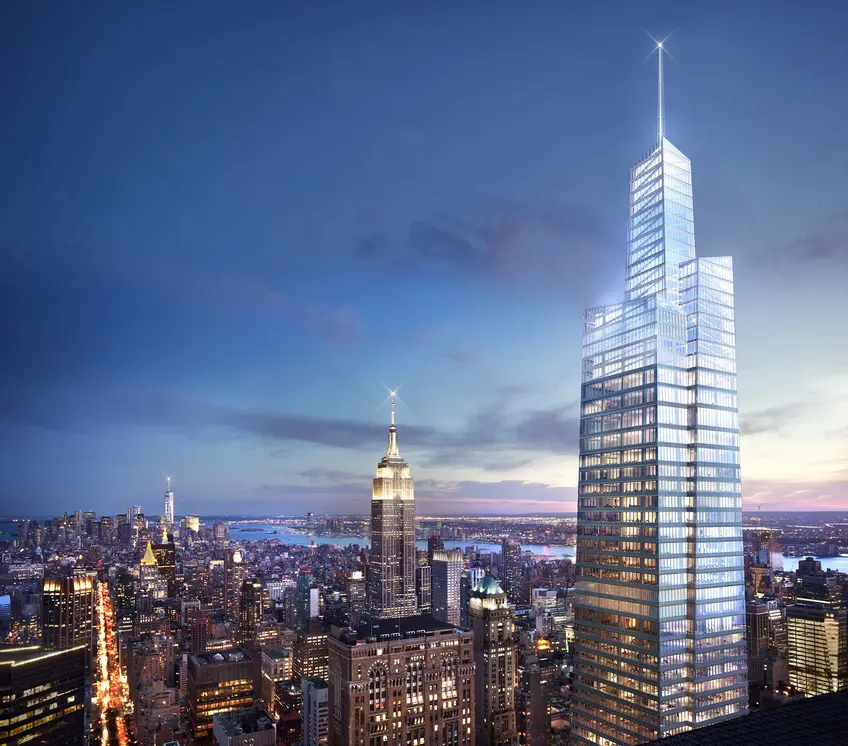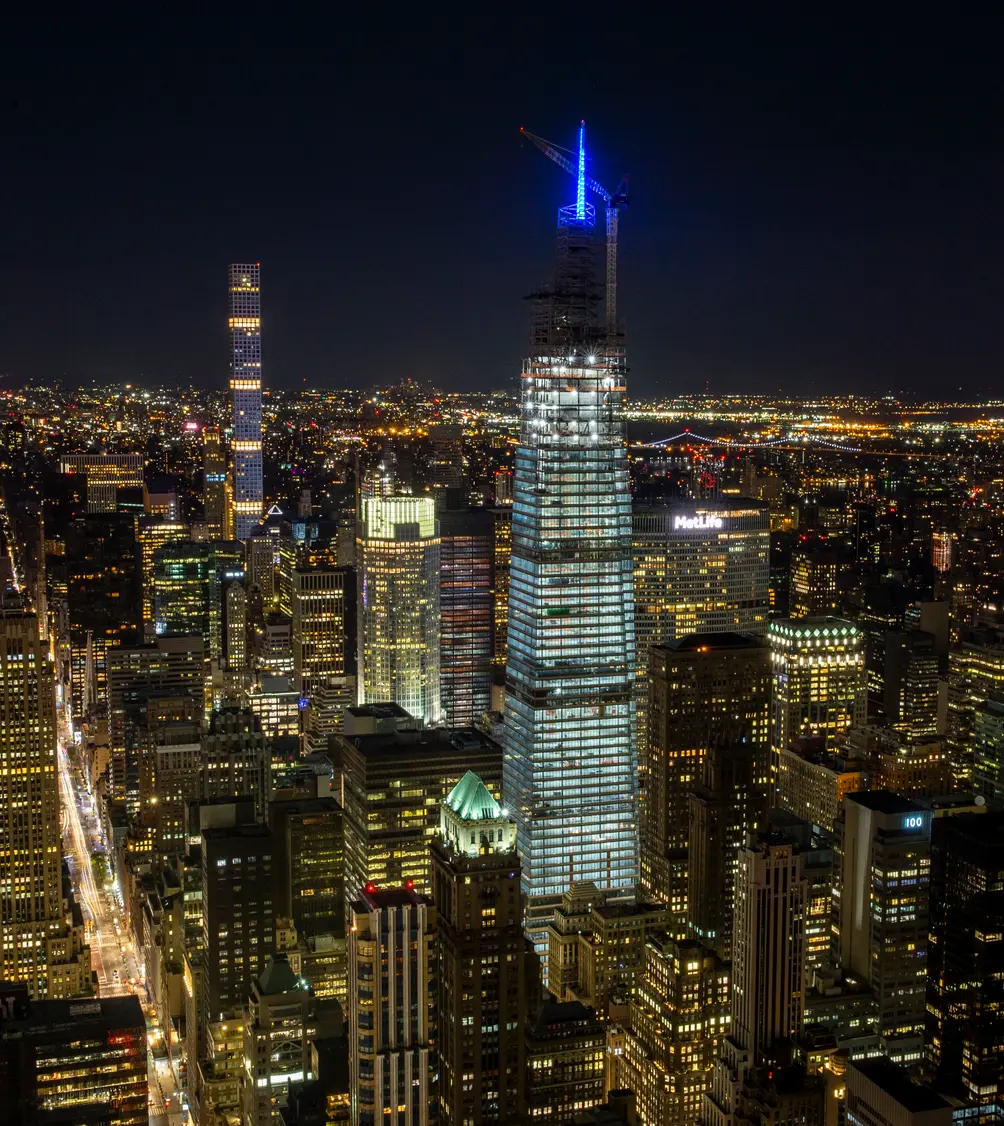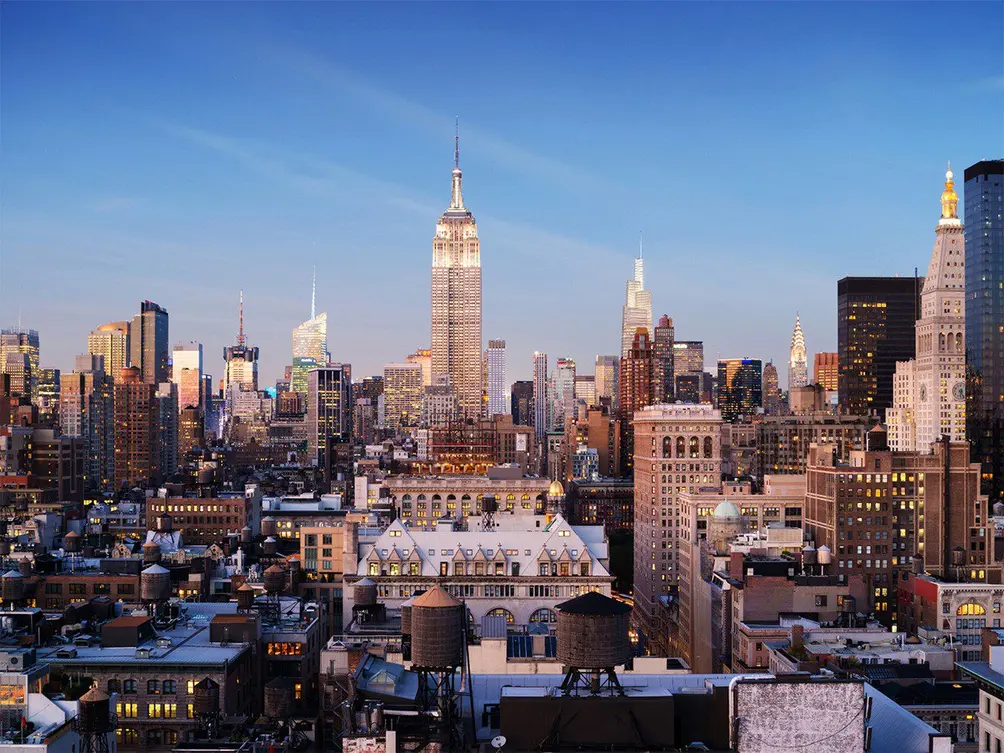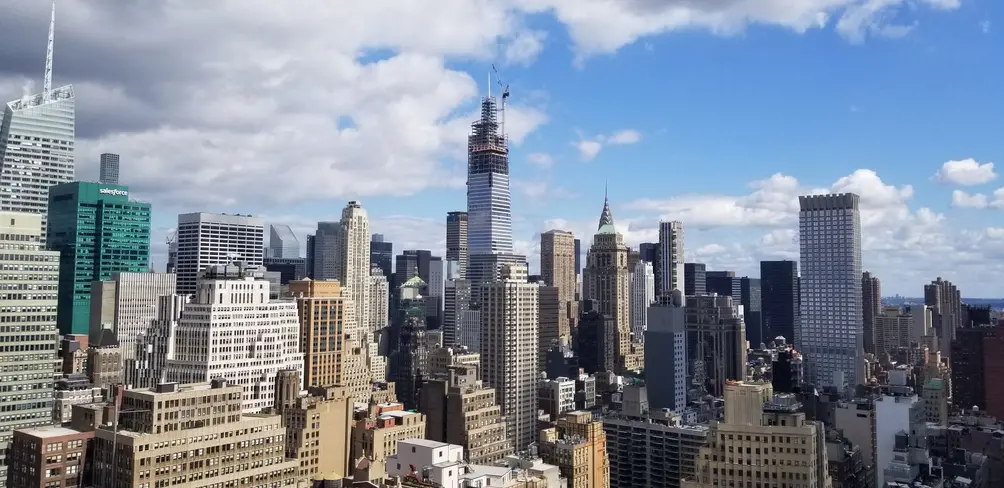 Rendering credit: Visualhouse
Rendering credit: Visualhouse
On May 31st, CityRealty announced the erection of a second tower crane atop the One Vanderbilt, which stood around 1,000 feet tall at the time. The new tower crane perched at the side of the skyscraper’s then-flat top, in contrast to the centrally-located crane that assembled the building’s office floors. The new crane was used to dismantle its predecessor and to assemble the cocoon-like, slanted crown, which rose over the course of late summer. The tower's vertical rise has picked up dramatically in recent weeks, when the 100-foot-plus girder cage rose in less than a month, surpassing the angled, 1,296-foot pinnacle of 30 Hudson Yards which topped out in July 2018.
 Photo of 1 Vanderbilt with newly-attached spire illuminated blue (right-hand side) Credit: Max Touhey
Photo of 1 Vanderbilt with newly-attached spire illuminated blue (right-hand side) Credit: Max Touhey
The New York skyline has captured the world’s imagination since the Brooklyn Bridge and the Statue of Liberty rose by the harbor in the late 19th century. In the decades since, the world’s most famous skyline has hosted several of the world’s tallest buildings, which literally raced one another for the record-breaking title at the end of the 1920’s, when 40 Wall Street, the Chrysler Building, and the Empire State Building all claimed the crown within a roughly one-year span.
 One Vanderbilt on the Midtown skyline (Max Touhey)
One Vanderbilt on the Midtown skyline (Max Touhey)
 Visualhouse for KPF/SL Green
Visualhouse for KPF/SL Green
The skyline race extends beyond the principal skyscraper districts of Downtown and Midtown. Across the Hudson River, 900-foot-tall 99 Hudson Street became New Jersey’s tallest building in late 2018. On the Upper West Side, 200 Amsterdam Avenue has recently reached its top floor, and is expected to top out at 668 feet in the coming weeks, becoming the neighborhood’s tallest building. Last week in Queens, Skyline Tower surpassed One Court Square to become the city’s tallest building outside of Manhattan, a title that the future 778-footer will hold until Brooklyn’s 9 DeKalb tops out at 1,066 feet some time next year.
 One Vanderbilt. Credit: Vitali Ogorodnikov
One Vanderbilt. Credit: Vitali Ogorodnikov



 6sqft delivers the latest on real estate, architecture, and design, straight from New York City.
6sqft delivers the latest on real estate, architecture, and design, straight from New York City.
